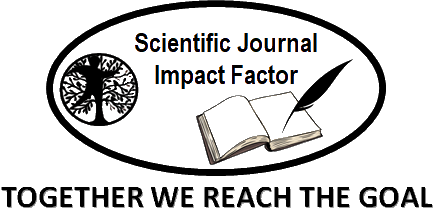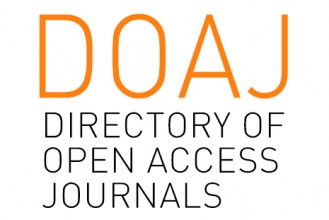The Effect of Passing Movement and Pair Passing Training on Shortpass Skills and Agility in 9-12 Years Old Students at the 89 Selindung Football School in Pangkalpinang City
Abstract
This research aims to axamine (1) the effect of passing movement training on short pass skills and agility of 9-12 year old athletes of Sekolah Sepakbola 89 Selindung (89 Selindung Football School), Pangkalpinang City, (2) the effect of passing in pairs training on short pass skills and agility of 9-12 year old athletes of 89 Selindung Football School, Pangkalpinang City, (3) the difference in the effect of passing movement training towards short pass skills and agility and passing in pairs training towards short pass skills and agility of 9-12 year old athletes of 89 Selindung Football School, Pangkalpinang City. This research method used a quantitative approach with a research design known as Quasi Experimental Design. There were two types of quasi-experimental designs: Time-series Design and nonequivalent Control Group Design. The research subjects were conducted at Selindung football field located in Selindung Baru, Gabek District, Pangkalpinang City, Bangka Belitung Islands Province. The research sample consisted of 40 students divided into two groups: experimental group given the passing movement training and control group given passing in pairs training. The data collection was carried out through shortpass and agility tests before and after treatment (pretest and posttest), with a total of 16 meeting sessions, consisted of 14 training sessions, 1 pretest, and 1 posttest. The results of data analysis show that both passing movement and passing in pairs training have a significant effect on improving students' shortpass and agility skills. Hypothesis testing proves that there is a significant increase from the pretest to the posttest results in each group, both in shortpass skills (t count = 6.185 for passing movement and 6.658 for passing in pairs) and agility (t count = 9.797 for passing movement and 8.469 for passing in pairs), with a ttable value = 2.024. And the results of the difference test between groups show that there is no significant difference between passing movement and passing in pairs trainings in improving short pass skills (t count = 0.265 < t table = 2.024) and agility (t count = 0.809 < t table = 2.024). This means that although both training methods are equally effective, both have relatively equal effects. Both trainings have been proven to improve skills, technical, and basic physical aspects of playing football significantly at an early age.
Keywords
Full Text:
PDFReferences
Anwar et al. 2019. Football Passing and Control Skills Exercise Model Based on Small Side Games For Ages 12-14 Years. Budapest International Research and Critics in Linguistics and Education (BirLE) Journal, 481–493.
Atiq, A., & Yunitaningrum, W. 2020. Physical activities for moral forming football athletes. Health, Sport, Rehabilitation, 6(3), 51. https://doi.org/10.34142/hsr.2020.06.03.06
Candra, C., Mulyono, D., & Syafutra, W. 2022. The Effect of Paired Passing Training on the Inner Foot Passing Skills of Junior High School Futsal Extracurricular Students, 7(2), 378– 385. 127
https://doi.org/10.52060/mp.v7i2.903
Chan, H. C. K., Fong, D. T. P., Lee, J. W. Y., Yau, Q. K. C., Yung, P. S. H., & Chan, K. M. 2016. Power and endurance in Hong Kong professional football players. Asia-Pacific Journal of Sports Medicine, Arthroscopy, Rehabilitation and Technology, 5, 1–5. https://doi.org/10.1016/j.asmart.2016.05.00 1.
Chomani, S. H., Dzay, A. M., Khoshnaw, K. K., Joksimovic, M., Lilic, A., & Mahmood, A. 2021. Effect of aquatic plyometric training on motor ability in youth football players. Health, Sport, Rehabilitation, 7(1), 66–76. https://doi.org/10.34142/HSR.2021.07.01.0 6.
Dunton, A., O’Neill, C., & Coughlan, E. K. 2020. The impact of a spatial occlusion training intervention on pass accuracy across a continuum of representative experimental design in football. Science and Medicine in Football, 4(4), 269– 277. https://doi.org/10.1080/24733938.2020.174 5263
Fajrin, S. N., Agustiyawan, A., Purnamadyawati, P., & Mahayati, D. S. 2021. Literature Review: The Relationship Between Coordination and Ball Dribbling Skills in Soccer Players. Indonesian Journal of Physiotherapy, 1(1), 6. https://doi.org/10.52019/ijpt.v1i1.2605
Nobari, H., Gorouhi, A., Mallo, J., Lozano, D., Prieto-González, P., & MainerPardos, E. 2023. Variations in cumulative workload and anaerobic power in adolescent elite male football players: associations with biological maturation. BMC Sports Science, Medicine and Rehabilitation, 15(1), 1–13. https://doi.org/10.1186/s13102-023-00623-5.
Soniawan, V., Setiawan, Y., Edmizal, E., Haryanto, J., & Arifan, I. 2022. The Football Passing Technique Skills. Halaman Olahraga Nusantara (Jurnal IlmuKeolahragaan), 5(1), 80. https://doi.org/10.31851/hon.v5i1.650 3.
DOI: http://dx.doi.org/10.18415/ijmmu.v12i11.7126
Refbacks
- There are currently no refbacks.
Copyright (c) 2025 International Journal of Multicultural and Multireligious Understanding

This work is licensed under a Creative Commons Attribution-NonCommercial-NoDerivatives 4.0 International License.
https://ijmmu.com
editor@ijmmu.com
facebook.com/ijmmu
Copyright © 2014-2018 IJMMU. All rights reserved.



































